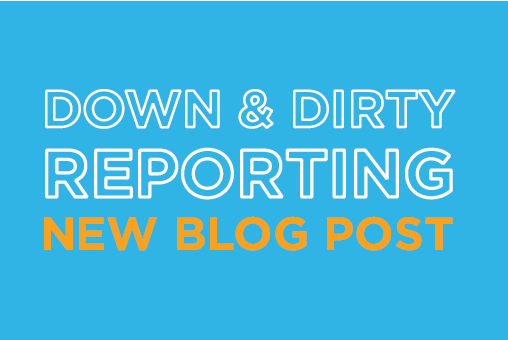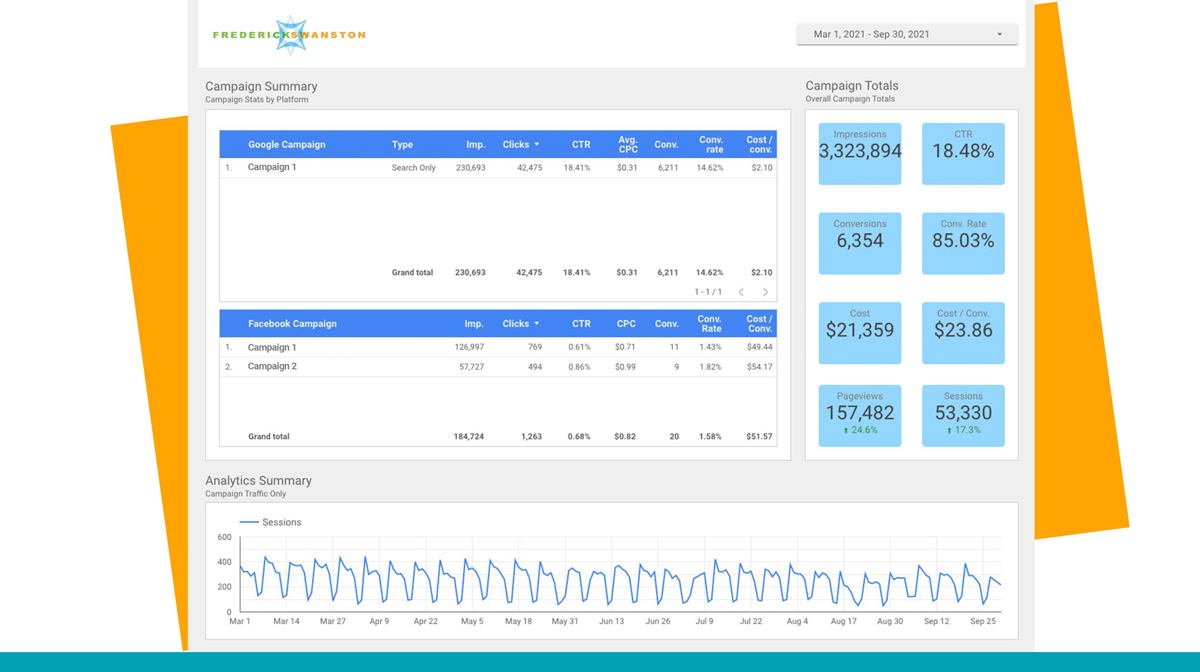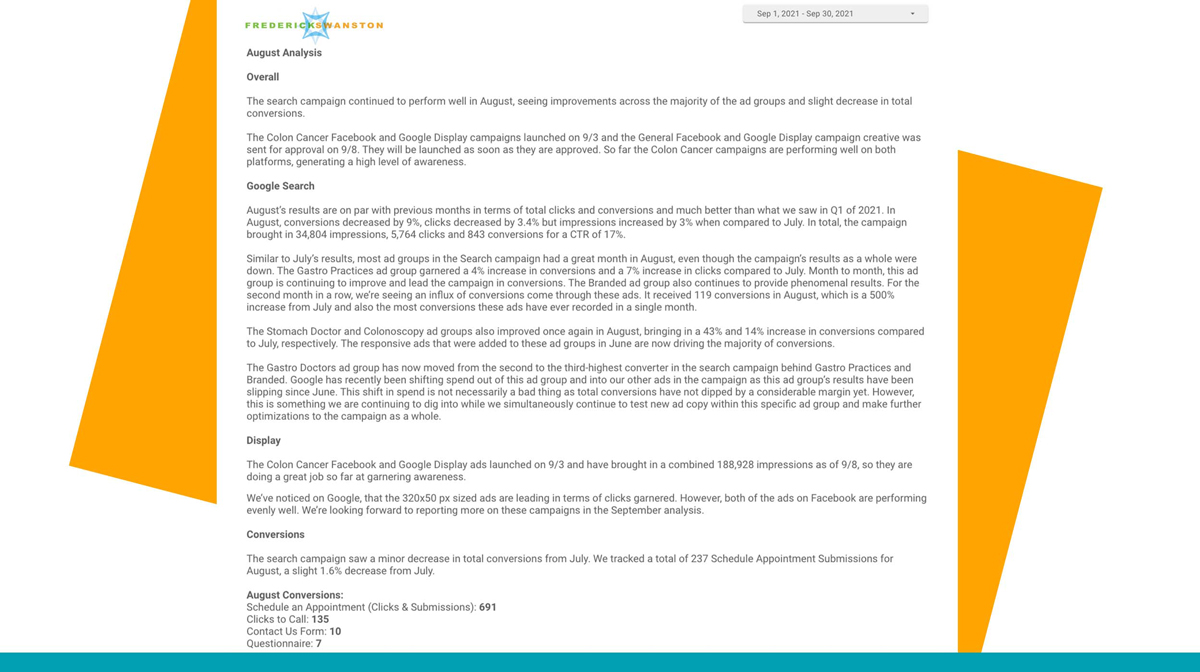
As marketers, we work for weeks – or even months – on a campaign. We argue over the direction, debate the necessity of every letter of copy and tweak the creative at least 47 times. Finally, the campaign launches and everyone gets some well-deserved rest. But not long after the celebration subsides, the inevitable question becomes, “So, how is the campaign performing?”
At Frederick Swanston, we know that the campaign launch is really just the beginning. After a campaign is launched, it is obviously critical to measure results and react to changing market demands – the key to always keeping the work relevant and effective.
In order to track this success, it is important to have reporting tools and processes in place. However, more often than not, reporting can be incomplete, expensive and unfocused. We’re here to help you with some down and dirty reporting tips that allow you to always keep your finger on the pulse of your campaigns. So strap in, because it’s the first of the month and that means… IT’S TIME TO GET DOWN & DIRTY WITH DIGITAL CAMPAIGN REPORTING!

Step 1: Identify Goals
We’ve all reviewed campaign reports that include impression and click stats, but there is little on the data that really matters – like form submissions, appointments scheduled or phone calls. This is a common mistake of failing to identify the campaign goals upfront and tailoring the reporting accordingly.
Before any campaign reporting is created, you should identify the goals. Throughout the process, make sure the goals are clear and attainable. If your goal is to drive traffic, then clicks and website traffic should be front and center. If the campaign goal is applications, then you better plan to have form submissions as your top metric. If you identify your goals early and keep them in mind throughout the process, you will have a clearer report.
Step 1: Conduct an Audit

Step 2: Track Results
Now that you have established your goals, campaign tracking needs to be set up so you can gather the necessary data for your reports. Tracking for digital campaigns can seem complicated, but it boils down to tracking general website traffic, tracking conversions and identifying where consumers are originating.
Step 3: Pick a Dashboard
Once you’ve set up your tracking, you’ll need a reporting dashboard to showcase your amazing campaign results! There are many platforms out there that cost an arm and a leg. REPORTING DOESN’T HAVE TO BE EXPENSIVE! We use Google DataStudio, which is a free tool, to create custom dashboards for each of our clients. DataStudio allows you to customize dashboards as needed, and it’s fully integrated with Google Ads and Google Analytics. DataStudio can also be extended to work with other platforms, such as Facebook or Instagram, by using tools like Supermetrics.

Step 4: Celebrate
So you’ve identified goals, set up tracking and created a dashboard. If you’ve followed the tips above, you should have a report that is complete, clear and focused. As an additional bonus, the tools above are free to use, so you didn’t even have to ask for more budget. Time for a cocktail. See, that wasn’t so hard was it?
Partner with Frederick Swanston to develop digital campaigns that achieve your goals and add value to your brand experience. Plus, we’ll work with you to provide reporting that is clear, concise and ROI-focused. Contact us here.
![]() Jake Caudell
Jake Caudell
The original version of this page was published at: https://frederickswanston.com/down-dirty-reporting/
Frederick Swanston is a full-service advertising agency with capabilities in creative, brand development, media strategy and placement, web development, interactive, direct marketing and research.
Clock into the world’s largest audience with TikTokTikTok… It’s the fastest-growing social media platform in the world, with over a billion active users. Over the ...read more
You’re close to your patients. You’ve served many of them for years. You have access to NRC data, and you can find secondary research to back up your assumptions. You know ...read more
Seventeen vs Seventy – the advertising review blog from Frederick Swanston, featuring Liv and Oma, granddaughter and grandmother. Like any family, sometimes they agree, ...read more
Step up the originality.In a crowded healthcare marketplace, break free from the crowd with originality and creativity.Raise your hand if you’ve ever been in a meeting and someone ...read more